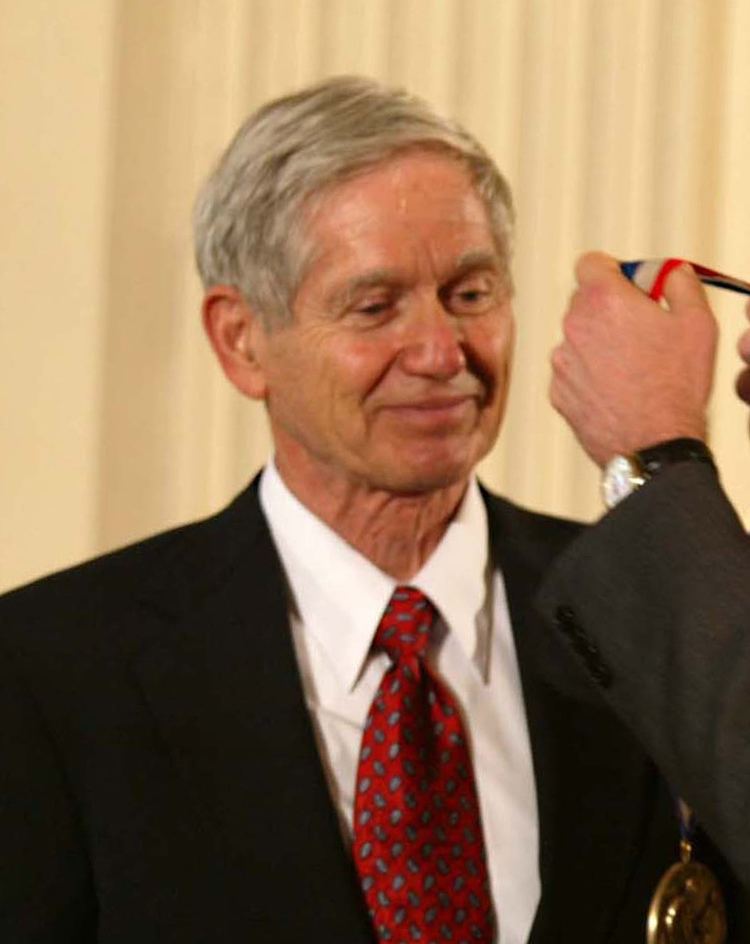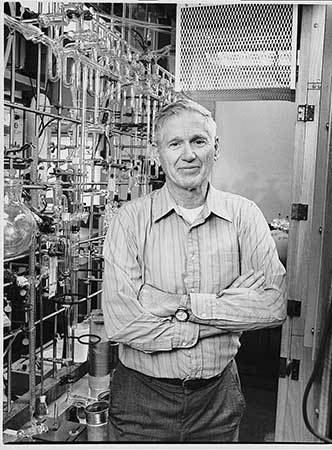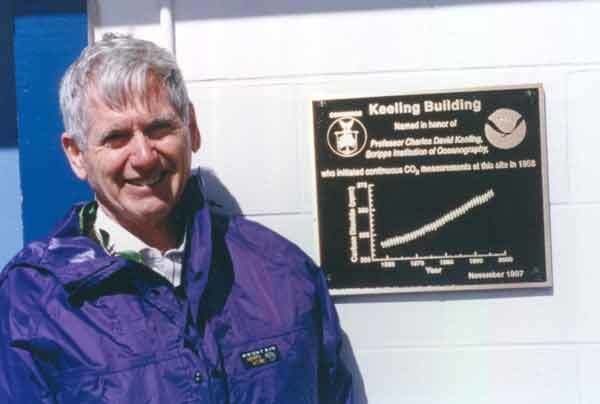Citizenship American Name Charles Keeling | Fields Atmosphere Role Scientist | |
 | ||
Born May 20, 1928 ( 1928-05-20 ) Institutions Mauna Loa ObservatoryScripps Institution of Oceanography Awards Guggenheim Fellowship for Natural Sciences, US & Canada, National Medal of Science for Physical Science | ||
Alma mater University of Illinois | ||
Getting serious about climate change charles david keeling annual lecture
Charles David Keeling (April 20, 1928 – June 20, 2005) was an American scientist whose recording of carbon dioxide at the Mauna Loa Observatory first alerted the world to the possibility of anthropogenic contribution to the "greenhouse effect" and global warming. The Keeling Curve measures the progressive buildup of carbon dioxide, a greenhouse gas, in the atmosphere.
Contents
- Getting serious about climate change charles david keeling annual lecture
- Charles david keeling
- Early life and early career
- Work with Scripps Institution of Oceanography 19582005
- Honoraria
- Personal
- Membershipsfellowships
- References

Charles david keeling
Early life and early career

Keeling was born in Scranton, Pennsylvania. He graduated with a degree in chemistry from the University of Illinois in 1948 and earned a PhD in chemistry from Northwestern University in 1954. He was a postdoctoral fellow in geochemistry at the California Institute of Technology until he joined Scripps Institution of Oceanography in 1956, and was appointed professor of oceanography there in 1968.

At Caltech he developed the first instrument to measure carbon dioxide in atmospheric samples. Keeling camped at Big Sur where he used his new device to measure the level of carbon dioxide and found that it had risen since the 19th century.
Work with Scripps Institution of Oceanography, 1958–2005
Keeling worked at the Scripps Institution for 43 years during which time he published many influential papers. Roger Revelle, the Director of Scripps Institution of Oceanography, based at La Jolla, California, persuaded Dr. Keeling to continue his work there. Revelle was also one of the founders of the International Geophysical Year (IGY) in 1957–58 and Keeling received IGY funding to establish a base on Mauna Loa in Hawaii, two miles (3,000 m) above sea level.
Dr. Keeling started collecting carbon dioxide samples at the base in 1958. By 1960, he had established that there are strong seasonal variations in carbon dioxide levels with peak levels reached in the late northern hemisphere winter. A reduction in carbon dioxide followed during spring and early summer each year as plant growth increased in the land-rich northern hemisphere. In 1961, Keeling produced data showing that carbon dioxide levels were rising steadily in what became known as the "Keeling Curve".
In the early 1960s, the National Science Foundation stopped supporting his research, calling the outcome "routine". Despite this lack of interest, the Foundation used Keeling's research in its warning in 1963 of rapidly increasing amounts of heat-trapping gases. A 1965 report from President Johnson's Science Advisory Committee similarly warned of the dangers of extra heat-trapping gases, which cause the temperature of the Earth to rise.
The data collection started by Dr. Keeling and continued at Mauna Loa is the longest continuous record of atmospheric carbon dioxide in the world and is considered a reliable indicator of the global trend in the mid-level troposphere. Dr Keeling's research shows that the atmospheric concentration of carbon dioxide has grown from 315 parts per million (ppm) in 1958 to 380 (ppm) in 2005 with increases correlated to fossil fuel emissions. There has also been an increase in seasonal variation in samples from the late 20th century and early 21st century.
Honoraria
Personal
Keeling was an enthusiastic outdoorsman who made many hiking and camping trips to the Western mountains, particularly the Cascade Mountains of Washington state. He was an active member of the Wilderness Society for much of his life.
Keeling married Louise Barthold in 1955. They had five children, one of whom (Ralph Keeling) followed in his father's footsteps and is currently a climate scientist at Scripps Institution of Oceanography. Charles Keeling was also an accomplished classical pianist who almost chose a career in music. Keeling was a founding director of the University of California San Diego Madrigal Singers. He was also general chairman of the citizens committee which drafted the Del Mar General Plan (or "Community Plan") in 1975.
He died of a heart attack in 2005, aged 77.
Memberships/fellowships
Keeling was a Guggenheim fellow at the Meteorological Institute, University of Stockholm (1961–62); a guest professor at the Second Physical Institute of the University of Heidelberg (1969–70) and the Physical Institute of the University of Bern (1979–80).
He was a fellow of the American Academy of Arts and Sciences, the American Geophysical Union, and the American Association for the Advancement of Science, and a member of the National Academy of Sciences.
He was a member of the commission on global pollution of the International Association of Meteorology, and scientific director of the Central CO2 Calibration Laboratory of the World Meteorological Organization.
